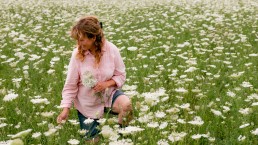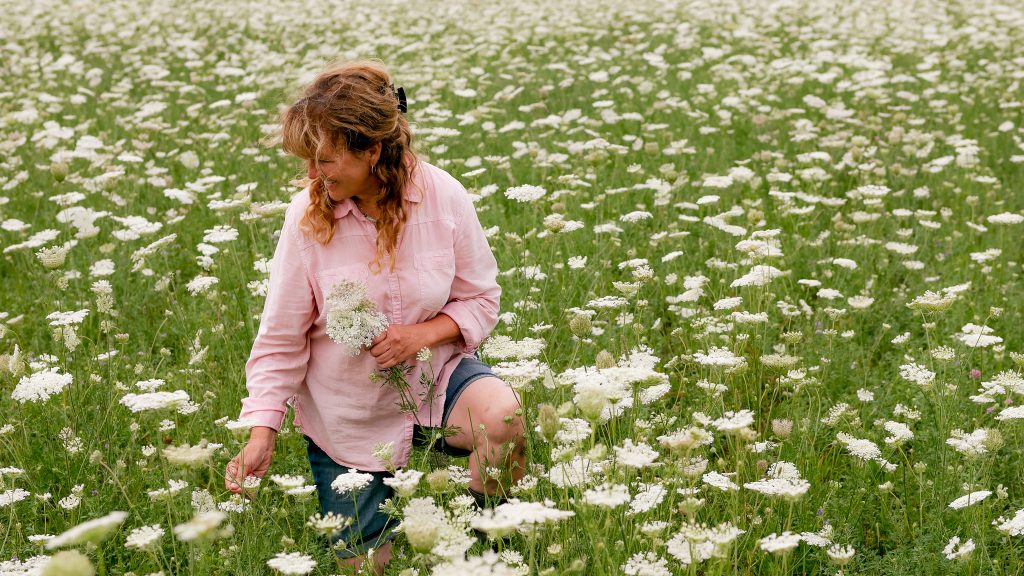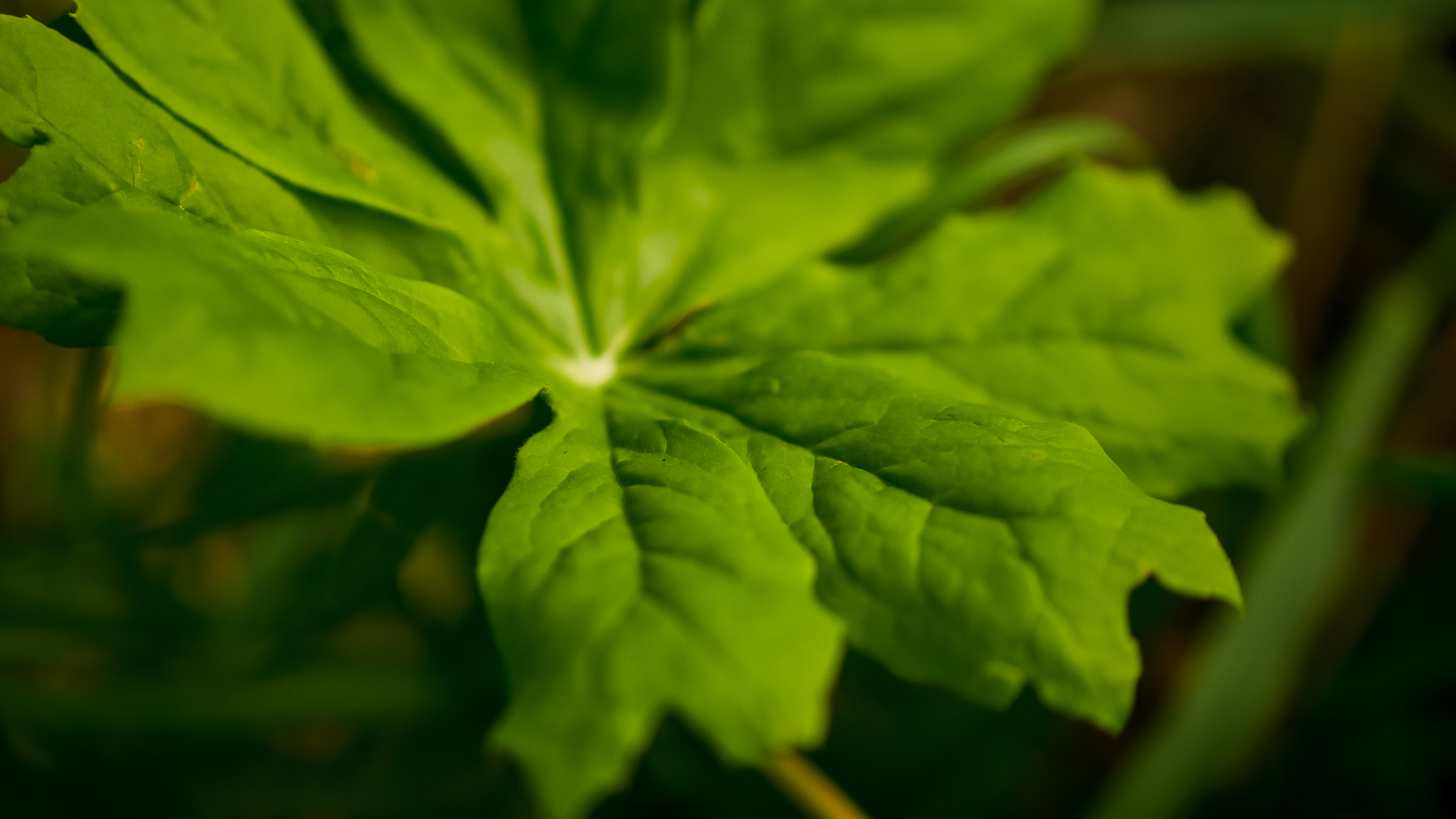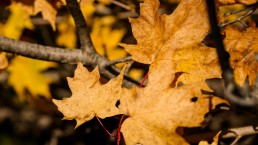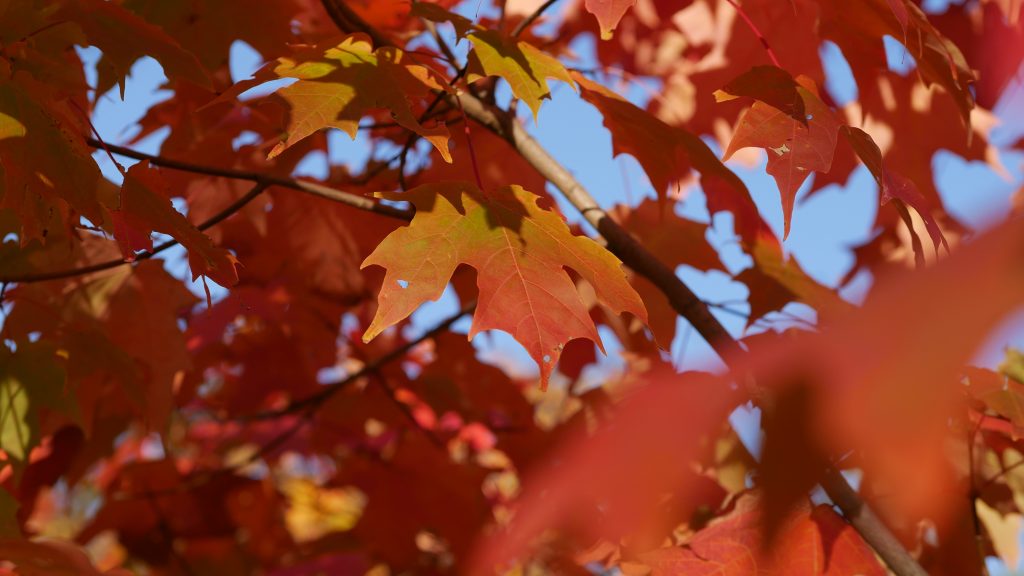Top 10 Best Practices for Herbalists
“Giving back and acting in a way that is regenerative, benefits us all”
– Penelope Beaudrow
1. Know your Endangered & At-Risk Species
Whether you’re foraging yourself or purchasing herbs at your local natural health food store, it is very important to know the circumstances around the plants you are working with. When it comes to species at risk, it is always recommended that you purchase herbs that are sustainably grown and cultivated and to avoid foraging or wildcrafting (as much as this part of herbalism is often a favourite!). This helps maintain the wild population and helps promote the livelihood of these endangered species. As well, there are often many substitutes for those that are at-risk, and this can be a great approach to avoid harming the population altogether. Alternatively, if no substitute can be found, then it is always recommended that actions are taken to give back what you’ve taken, and then some. For example, if you’re purchasing Goldenseal (Hydrastis canadensis), which again should be purchased and not foraged, it would be recommended that you plant some of your own. Whether that means planting in your own garden, or sprinkling seeds on your favourite trail – regardless of how, there are a ton of ways you can give back to help encourage the repopulation. For more information and resources, contact your local conservation group or management area or get connected with groups such as the United Plant Savers, or visit a local sanctuary – like Penelope’s sanctuary; Kina Kegoo, in Cannington, Ontario (sanctuaries can also be found listed at UPS!)⁷. More information can also be found on your government’s website.
2. Choose Your Resources Well
It is important to remember that the magic and medicine of plants are only as good as the quality of the plants themselves. These days, where herbs are being cultivated and sold in abundance, it can be easy to overlook the quality of the plants, especially underneath the often appealing packaging. It’s safe to say that growing your own is always recommended, as it gives Herbalists the opportunity to get to know the plants they’re working with and helps foster a tangible and therapeutic relationship that comes along with it. Whenever possible, if not growing your own, herbs should be purchased and grown locally. Not only just to support our farmers, but so you can gain a better understanding of the growing methods and so the plant material doesn’t have to travel as far (often along the way, herbs are sprayed through inspections in order to meet guidelines and regulations, which can be avoided purchasing directly from the grower). However, if that’s out of the question, it is wise to always look for herbs that are organic, forest-grown or wildcrafted. As many great healers would say, wildcrafted and/or organic signify that the herb was collected or grown with conscious awareness of the plant’s life cycle, and was picked according to the seasons, at the right time of day, and dried in the best drying conditions. It implies a certain conscious responsibility of the environment and the non use of chemical fertilizers or sprays¹.
3. Honouring your Harvest
An easy rule of thumb: always leave an area as beautiful as you found it; keeping in mind the animals, pollinators, germinated seedlings, and seeds left behind. It is also recommended and highly encouraged that you ask permission of the plant, which can be done by sitting with intention to take it and noticing how it feels, or directly through holding the plant in your hands. Like a grazing animal, it’s mindful never to take everything you’ve found, but rather take a little bit here and there along the way, leaving as much of what you can behind.
In addition, most of the land that we take ownership of was first tended to by the Indiginous Peoples of Canada, who understood that we are impermanent stewards of this earth, and we must take care of it with what little time we have. Many similar ceremonies and rituals can still be practiced today, or by creating those of your own, doing what feels authentic for you. At the end of the day, it’s important to pay respects to the plants that came before us, and for those that long outlive us – however that might look for you. You can even speak or say to yourself a land acknowledgement, such as, “every community owes its existence and vitality to generations from around the world who contributed their hopes, dreams, and energy to making the history that led to this moment. Some were brought here against their will, some were drawn to leave their distant homes in hope of a better life, and some have lived on this land for more generations than can be counted. Truth and acknowledgment are critical to building mutual respect and connection across all barriers of heritage and difference. We begin this effort to acknowledge what has been buried by honoring the truth.”
4. Learn your Alternatives & Substitutes
Though it can be difficult to find a single plant medicine with the same mechanism of action as our endangered native plants, herbs are diverse and there are many options on plants that have a few similar medicinal properties that can be used instead. For example, one can use Berberine from Amur Cork Trees or Barberry instead of using the aforementioned Goldenseal. With that being said, whenever foraging, make sure you know the plant you are about to harvest, to avoid accidentally wildcrafting species at risk. There is a great Analog List created by Jane Bothwell to help navigate through choosing a less threatened species, and a great quote from her publication on United Plant Savers:
“When cultivated species are not available, then it is best to find a plant analog. An analog is an herb having a parallel action, function or end result to other medicinal herbs. In most instances, it is important and necessary to use a variety of analogs for the at-risk herb because an analog generally satisfies only some of the therapeutic actions of a particular plant species and does not demonstrate all medicinal actions of that plant. It is sometimes difficult to find replacements for our tried and true herb friends, but it also can be very satisfying and will expand your expertise, while helping to replant our future. Choose alien (non-native) plants for food and medicine, leaving the more fragile native plant species to flourish. Many alien plants are extremely powerful medicinals and will be a welcomed addition to your medicine chest.”²
5. Find Ways to Give Back
Of course there are many ways in which Herbalists and natural healers alike can do their part, and it doesn’t always have to create work. In some cases, doing nothing is doing something. Take for example rewilding – it is estimated that 20% of the earth is covered in grass, much of this being maintained lawns that are wasteful and void of diversity. Instead, If let be, these areas can slowly become diverse ecosystems, holding space for native species to come back, or even utilizing these newfound areas to plant native and endangered species. This also helps insects and animals find new homes and allows more plants to flower for our vulnerable pollinators! Needless to say, rewilding can help heal the wounds we’ve long since inflicted⁹.
For more information on rewilding, what it is and how to do it, there’s a great short film with Penelope Beaudrow, where she shares how her family’s land has evolved into what has become a thriving place for threatened and at risk medicinal and native plants, as well as how the work on their farm and sanctuary gives back to the land and animals that live here and benefits us all, and some of the things you can do to help make a difference.³
Another preservation action you can take, is to save plants that are soon to be destroyed by developments and transplant them somewhere safe, be it your lawn or someone else’s. This one may take getting your hands dirty and a little bit of heavy work, but the payoff is rewarding and the opportunities to do so are endless.
As Tao Orion beautifully puts it, “Native plants are not just native to a place, they are essential elements of a culture that stewards them. Native species like milkweed, echinacea, trillium, bloodroot, dwarf trout lily, elderberry, huckleberry, hickory and countless others are not just wildflowers but food, medicine, fiber, shelter, tools.”¹⁰ Once we can change the way we see the the world around us, the world around us begins to change.
6. Give Thanks
Some Indigenous peoples have a tradition of leaving tobacco after gathering, as a way to show their gratitude for that which was taken. In the same way, every Herbalist can offer thanks in some way that feels authentic to them, whether by saying a few words or leaving something behind. You can also do some research on what rituals (if any) your ancestors may have practiced regarding reciprocity that may have been lost, and that you can rekindle and bring back into your own practice.
When it comes down to it, there are so many meaningful ways to insert ourselves into nature in a way that shows gratitude through action – causing a ripple of change through everything we do. Through stewardship of the land we can mediate disturbances to create high density areas, refashion long standing relationships with landscapes that provide for our needs, and work to prioritize habitat connectivity by envisioning a continuous corridor of wild spaces that butterflies, birds, lizards, frogs, skunks, bobcats, and bears move through,¹⁰ to name a few examples.
Whatever your way, always be mindful of the concept of exchanging rather than taking and bringing awareness of the symbiotic relationship between humankind and the plant kingdom.
7. Know your Symbols
When it comes to ethical purchasing, being able to understand the symbols and indications on packaging can be very important to help you purchase the most sustainable option possible. Oftentimes when we go into our local natural health food stores it can be hard to get a clear idea of where what you’re buying came from, but understanding your symbols can help bring some transparency to this supply chain process.
When it comes to Certified Organic labels, these standards vary by province and state, so look into your government’s website to learn more about what entails of this certification. Though, it’s safe to say, seeing an organics label is better than not seeing one at all. You may also see things like wildcrafted; meaning plants are collected directly from their natural wild habitat such as forests, fields and undeveloped areas of land, and they should be unadulterated by chemicals such as fertilizers and pesticides. This of course is something that should be avoided when in search of at-risk or endangered species, but for all other herbs, it’s almost always a good indicator of quality. Forest-Grown is another great attribute to look out for; whereby each verified forest farmer has a dynamic story of land stewardship, often taking decades of dedication to grow the forest botanicals in their care⁵.
So whatever your label, make sure you understand what you’re buying before you spend your hard earned dollars.
8. Empower Yourself
Considering everything is made up of energy, growing your own herbs can be wonderfully therapeutic for yourself, loved ones, and community. From the very beginning your devout care and attention goes into watching your seeds sprout into seedlings, all the way up until they’re ready to harvest – allowing the plants to become a vessel of your attentive nurturing, embodies the reciprocate and synergistic relationship between us and the plants.
One of our favourite local places to get all of our essentials is Richters Herbs. They offers plants, seeds, books, dried herbs and so much more⁶.
9. Get Educated
In Canada, most endangered species live in the south, which is also where most of us humans live. It’s no coincidence: there are more species in the south where the climate is warmer, and people have transformed southern landscapes to make way for agriculture and cities. We live in close proximity to many endangered species, yet many of them fly under our radar – especially the plants⁸.
However, there are so many ways to continue your education and to earn credits each year on endangered and at risk plants in your area. The awareness that comes along with staying current and aware of these plants can be of huge benefit to your practice, and to the world around you. It is to be noted that each province and state has their own list of endangered plants, which you can refer to and begin to pay homage to. This can also be a fun activity to do by yourself or with family: anytime you travel to new towns or cities, keep a lookout for any you can find or purchase seeds to bring with you ahead of time to sprinkle along your journey!
There are many organizations and conferences that are now offering lectures on at-risk and endangered species, such as the Ontario Herbalists Association, Back to Your Roots Herbal Retreat, Heartwood, Canadian Herb Conference, American Herbalist’s Guild, and National Institute of Medical Herbalists.
10. Be the Educator
Share as much information as you can within your own social circles, family, and community. The more widespread the information, the more that can be done about it! Plus, this is a great way to bring communities together and enjoy activities together like planting in local parks, going on identification walks, and through speaking and sharing with local garden groups and clubs, and even schools.
Change starts with you, and the ripple never stops once it starts!
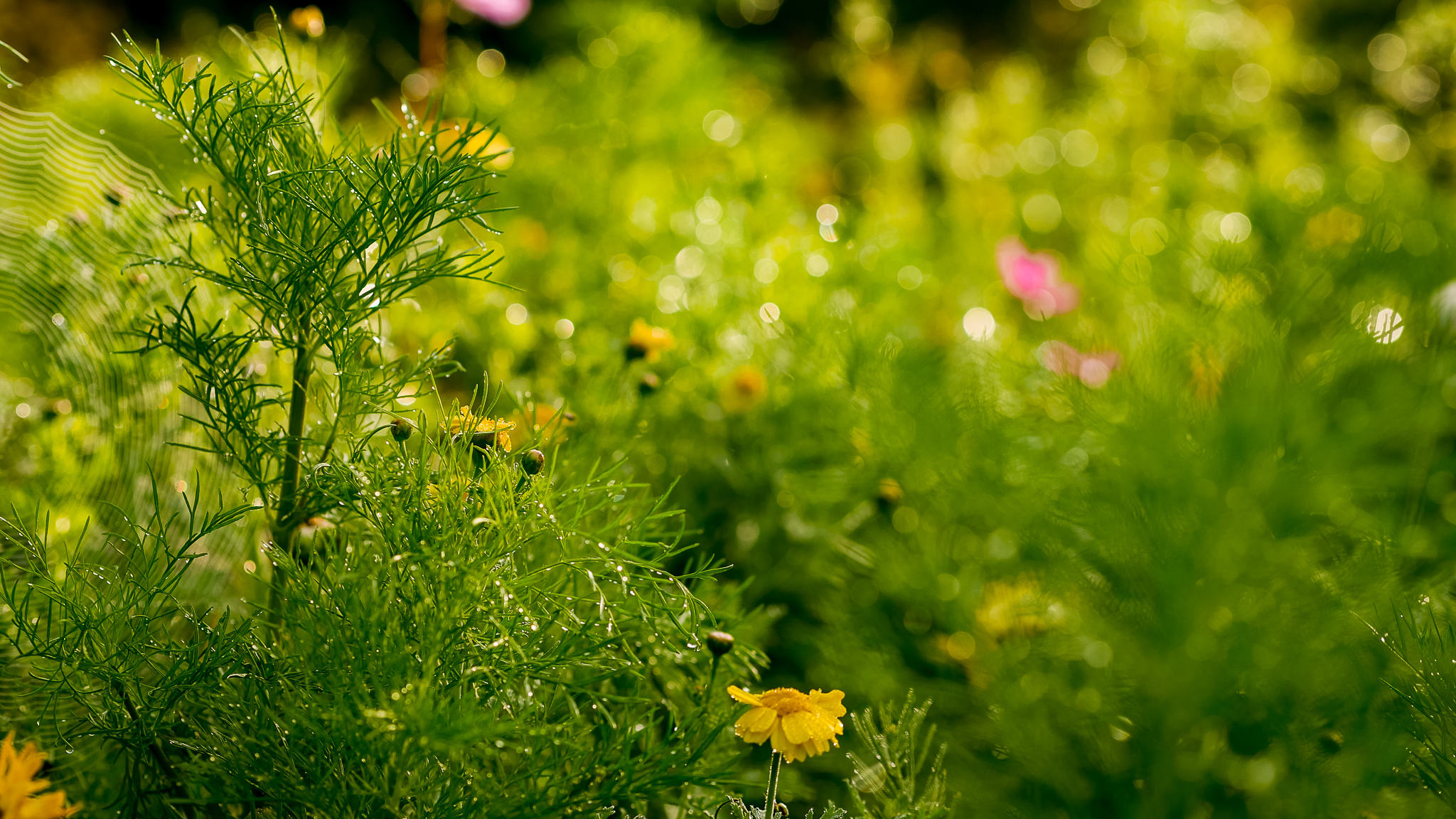
Post Contributors:
Penelope Beaudrow, RH
Penelope Beaudrow is a Registered Herbalist and educator who has devoted the past 25 years to helping others foster deep and resilient connections with the living intelligence of the natural world and the regenerative, healing forces of plants and the medicine they carry.
Chelsea Vieira, Community Herbalist
Chelsea is a community herbalist and an all-around plant enthusiast. From a young age being fond of the wonders of the natural world, she’s since gone on to help others reconnect and rekindle this relationship, and the magic it encompasses.
References:
¹ Rosemary Gladstar. The Science and Art of Herbalism. Lesson One, page 6.
² Jane Bothwell. UPS List of Herbs & Analogues.
³ Penelope Beaudrow. For the Love of Medicinal and Native Plants. Everything Herbal, 2021.
⁴ Penelope Beaudrow, Lauri Hoeg. Sacred Plants – Spiritual and Medicinal Uses. Everything Herbal, 2021.
⁵ United Plant Savers. Forest Grown Verified Program, 2019.
⁶ Richters Herbs, 1969.
⁷ The Ginkgo Tree. Kina Gegoo Botanical Sanctuary. UPS Member, 2015.
⁸ Jenny McCune. The Endangered Species Hiding in Plain Sight. Canadian Geographic, 2019.
⁹ David Suzuki. Rewilding can help heal wounds we’ve inflicted. David Suzuki Foundation, 2021.
¹⁰ Tao Orion. Beyond the War on Invasive Species. 2015.
United Plant Savers, Become a Herbal Business Member.
Government of Ontario. Species At-Risk in Ontario, 2020.
United Plant Savers. Medicinal Plant Conservation Certificate Program.
The Canadian Encyclopedia. Endangered Plants in Canada, 2021.
United Plant Savers. Species At-Risk Assessment Tool. Downloads and resources.
Canadian Wildlife Federation. Canada’s Plants in Peril.
Photos provided by Serena Mor
Talking About Maple Syrup
Spring is on it's way...
My first experience with making maple syrup by myself was for my son’s science fair project on evaporation. That was over 25 years ago! I had as much fun as the boys. First, we tapped a couple of old sugar maples. Then waited anxiously for the sap to flow. When it was time to begin our experiment, we evaporated just enough sap to make syrup and then continued the evaporation process till we make Maple Candy, such a yummy experiment!
Believe it or not, but I personally go through a 4L jug of syrup per year! We LOVE it!
When is maple syrup tapping and harvesting season?
Maple sugar season in Ontario normally starts in the late winter and ends in the early spring. The sugar maple’s sap starts to flow after a hard freeze. The best time for maple sap collection is when nights are freezing cold and are followed by sunny and rather warm days that are between 40 and 50 degrees Fahrenheit. On days when these conditions are not reached, the flow of sap will be slow. When optimum conditions are reached, the sap will flow quickly, on these days, we should check often so that the buckets don’t run over! The entire sap collection season only lasts from three to four weeks. When the temperature remains above freezing, or when the maple trees begin to form buds, it’s time to stop collecting sap from the trees. If maple syrup is made from sap collected once buds have begun to form on the maple trees, the syrup will smell bad and have a poor flavor.
How long does maple syrup last?
Maple syrup never spoils! This is due to the high concentration of sugar in maple syrup. Maple syrup should be kept in the refrigerator once it’s opened to discourage mold from growing on the syrup. Should mold grow on maple syrup, it’s safe and easy to remove. Just scoop the mold off the top of the syrup with a spoon and discard the mold or strain the maple syrup into a clean container through a piece of cheesecloth. Maple syrup kept in a cold place such as a refrigerator is less likely to grow mold than maple syrup kept in a cupboard or other warm place.
How do you know when the maple syrup is done?
We have chosen to use a very simple method, the spoon test. Dip a spoon into the boiling sap and watch the sap drip back into the pan. If the sap still needs to boil more, the sap will fall off the spoon in separate droplets. When the syrup starts to run off the spoon in a sheet or a stream, then it’s almost done. It will also start to look more like syrup and less like sap at this point. If you think the syrup is done, take it off the fire and let it cool a bit. As it cools it should start to thicken if it has turned into syrup. If the syrup is still not thick enough it can be returned to the heat and boiled some more.
Which maple tree do you get syrup from?
There are three different species of maple that produce the kind of sap from which maple syrup is usually made, Sugar Maple (Acer saccharum), the Black Maple (Acer nigrum), and the Red Maple (Acer rubrum). These three species of maple have very high sugar contents in their sap. Red Maples offer a shorter sugar season because they tend to bud earlier than either Sugar or Black Maples. You can also tap the Manitoba Maple (Acer negrundo), the Silver Maple (Acer sacharinum), and the Bigleaf Maple (Acer macrophyllum). Birch and Black Walnut trees can be tapped for syrup. Next year I am going to try Black Walnut just for fun!
Does maple syrup have potassium in it?
One tablespoon of maple syrup contains 42 mg of potassium. Not only does maple syrup contain potassium, but it also contains calcium, zinc, manganese, magnesium, and iron. The darker the maple syrup, the more of these minerals it contains. Maple syrup also contains trace amounts of vitamins B1, B2, B5, B6, biotin and folic acid.

